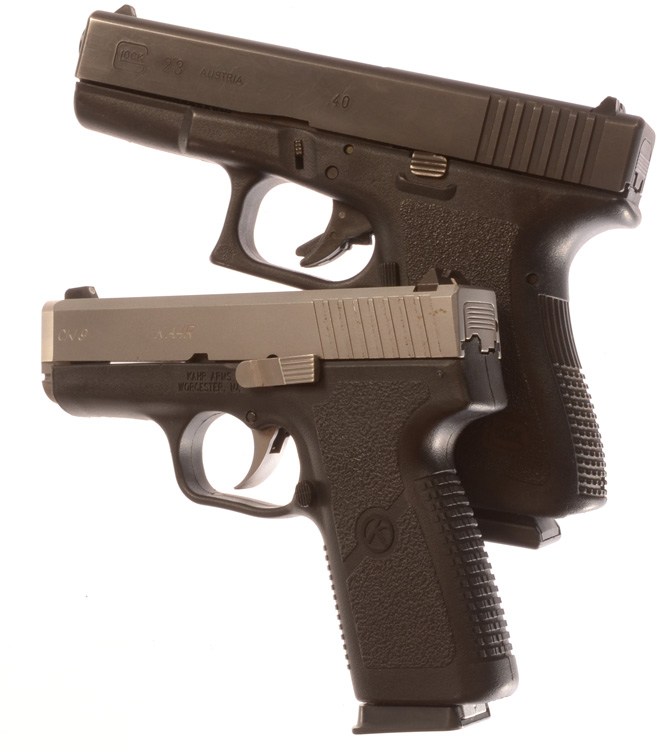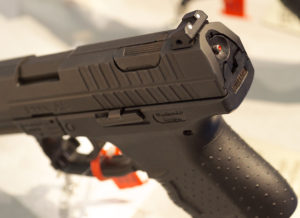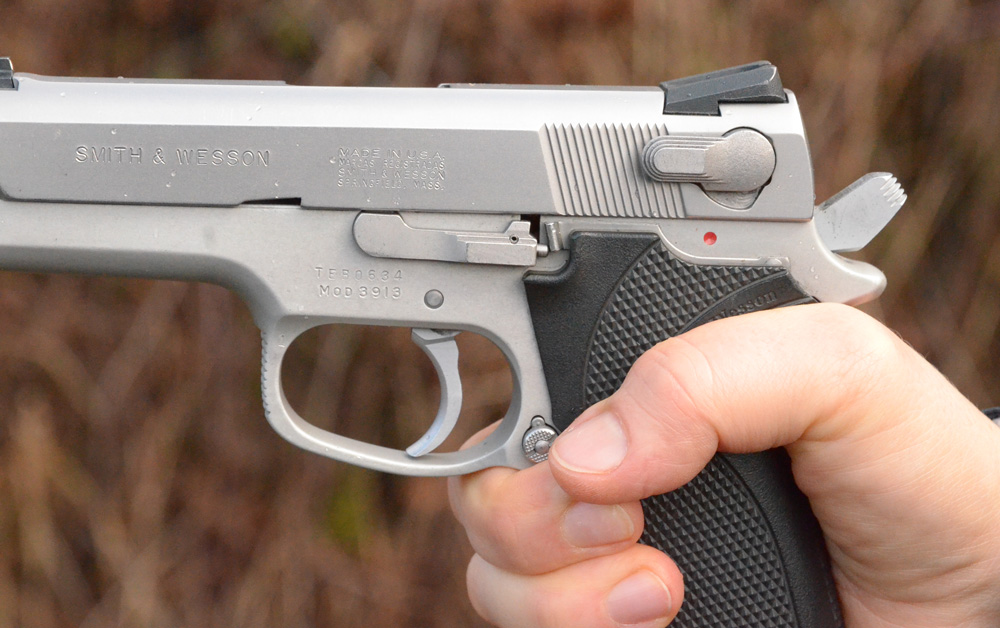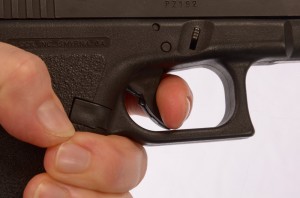

From Concealed Carry for Women, author Gila Hayes explores some of the many semi-automatic pistols sold, summarizing their various options and how they operate.
As with revolvers, selecting a semi-automatic handgun from a prominent manufacturer who has a proven track record of a decade or two in business is a good idea.

While everyone likes to have something that is unique, the more mainstream your defense handgun, the easier it will be for you to find a wide variety of accessories like holsters, sights, replacement magazines and grips, to say nothing of repair parts in the event of breakage.
Among semi-automatic handguns there are several discrete operating systems: single action, double action, double action only, striker fired, and some hybridization between those types.
Much of the separation focuses on how the firing pin or striker is put into motion to discharge the firearm. For handguns, discharging a cartridge of ammunition is still, at present, a mechanical process by which a striker or firing pin must be released to impact the primer in the ammunition cartridge. To do so, handguns need a mechanism by which a hammer or a striker is released so it can spring or fall forward to do its work.
The single-action semi-automatic’s hammer must be cocked for the gun to fire, and this is generally accomplished through cycling the slide, either manually during the initial loading sequence, or as part of the slide’s cycle during firing.
If practicing dryfire, the hammer can also be pulled back with a thumb. Generally, the only way to lower a single-action semi-automatic pistol’s hammer (called decocking) is to press the trigger with the chamber empty.

Most single-action handguns have quite a short trigger pull, often as little as 1/8 inch, and not much pressure is required to discharge the gun. For defensive use, it is best if the trigger pull requires at least five if not six pounds to discharge the gun; extremely light trigger pulls of three to four pounds belong only on handguns used for sporting purposes, if at all.
The 1911 variant is the most common representative of the single-action semi-automatic type of handgun. These are produced by a wide variety of manufacturers, including Kimber, Smith & Wesson, Sig Sauer, Taurus, Para Ordnance, Springfield Armory, Colt, Ruger and many, many more.
Less common today, but still a very attractive option, is the Hi-Power style pistol, usually sold by the Browning company. In fact, it is common to hear this type of handgun identified as the Browning Hi-Power, when actually a number of other manufacturers over the years have also produced pistols on good old John Moses Browning’s Hi-Power single-action design.
Double-action semi-automatics start their firing cycle with the hammer lowered, but like the double-action revolver, pressure on the trigger both cocks and releases the hammer to fire the gun.
This can require from six to 15 pounds of pressure on the trigger distributed over trigger pulls of ¾ to one inch long depending on the gun’s design. When the slide cycles during firing, it leaves the gun cocked so that it subsequently fires in single action, with a shorter trigger pull and pull weights of five to six pounds and lower.
The better quality examples of this gun type have additional mechanisms for safely lowering the hammer without using the trigger. These mechanisms are called decockers.
Today, the most prominent manufacturer of this pistol type is Sig Sauer, though Smith & Wesson and Ruger, who once ruled this part of the market, still make a few traditional double-action semi-automatic pistols.
Still, much of their product line has moved on to striker-fired pistols. Heckler & Koch, Beretta, Bersa, CZ, and Walther are other common sources for double-action autoloaders equipped with decockers.

Double-action-only guns have no single-action mode at all. Trigger pull weights and length are similar to the double-action mode of a traditional double-action pistol, and differ from traditional double-action semi-automatic operation in that every trigger pull is the same, long and often heavy, just like on a revolver.
These days, most manufacturers of traditional double-action semi-autos also offer variations in double-action only, usually in response to specifications required for police or military purchase bids.
One unusual example is Para Ordnance’s Light Double Action (LDA) model on which the length of the trigger pull is fully an inch, but the trigger pull is accomplished by applying under six pounds of pressure to the trigger, about half that of most double-action-only pistols.
Striker-fired handguns are quite similar to double-action-only semi-autos, in that every trigger pull is of the same length and weight, but the striker-fired mechanism generally requires in the neighborhood of five pounds pull weight, give or take a pound or so.
Striker-fired pistols have been around for decades, but they really rose to prominence in the United States with the adoption of the Glock auto pistol by law enforcement agencies, a trend which private gun owners eagerly copied.
Soon thereafter, a dozen manufacturers were offering striker-fired semi-auto pistols, including Smith & Wesson, Steyr, Kahr Arms, Walther, Heckler & Koch, Kimber, Springfield Armory, Taurus and many, many more.

Next Step: Get your FREE Printable Target Pack
Enhance your shooting precision with our 62 MOA Targets, perfect for rifles and handguns. Crafted in collaboration with Storm Tactical for accuracy and versatility.
Subscribe to the Gun Digest email newsletter and get your downloadable target pack sent straight to your inbox. Stay updated with the latest firearms info in the industry.

![Best Concealed Carry Guns In 2025 [Field Tested] Wilson Combat EDC X9S 1](https://gundigest.com/wp-content/uploads/Wilson-Combat-EDC-X9S-1-324x160.jpg)


![Best 9mm Carbine: Affordable PCCs [Tested] Ruger Carbine Shooting](https://gundigest.com/wp-content/uploads/Ruger-Carbine-Shooting-100x70.jpg)
![Best AR-15: Top Options Available Today [Field Tested] Harrington and Richardson PSA XM177E2 feature](https://gundigest.com/wp-content/uploads/Harrington-and-Richardson-PSA-XM177E2-feature-100x70.jpg)

The Bersa Thunder .380 series deserves consideration. They are similar in size and shape to a Walther PPK. The .380 with personal defense rounds and careful shot placement is just as effective as larger calibers.